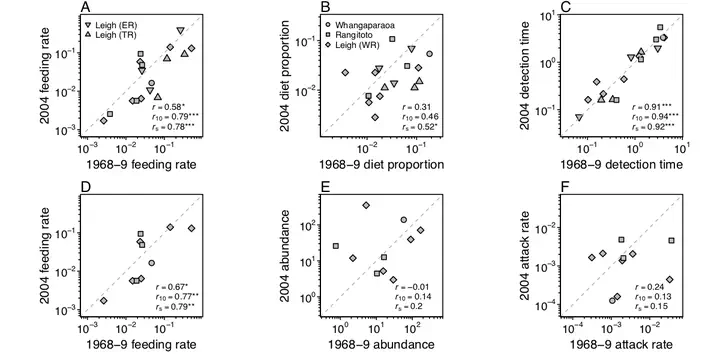High variation in handling times confers 35-year stability to predator feeding rates despite community change

Abstract
Historical resurveys of ecological communities are important for placing the structure of modern ecosystems in context. Rarely, however, are surveys alone sufficient for providing direct insight into the rates of ecological processes that underlie how communities function, either now or in the past. In this study, I used a statistically-reasoned observational approach to estimate the feeding rates of a New Zealand intertidal predator, Haustrum haustorium, using diet surveys performed at several sites by Robert Paine in 1968–9 and by me in 2004. Comparisons between time periods reveal a remarkable consistency in Haustrum haustorium’s prey-specific feeding rates, which contrasts with the changes I observed in prey abundances, Haustrum haustorium’s body size distribution, and the proportional contributions of Haustrum haustorium’s prey to its apparent diet. Although these results imply accompanying and perhaps adaptive changes in Haustrum haustorium’s prey preferences, they are nonetheless anticipated by Haustrum haustorium’s high range of variation in prey-specific handling times that dictate not only its maximum possible feeding rates but also the probabilities with which feeding events may be detected during diet surveys. Similarly high variation in detection times (i.e. handling and digestion times) is evident in predator species throughout the animal kingdom. The potential disconnect between a predator’s apparent diet and its actual feeding rates suggests that much of the temporal and biogeographic variation that is perceived in predator diets and food-web structures may be of less functional consequence than currently assumed.